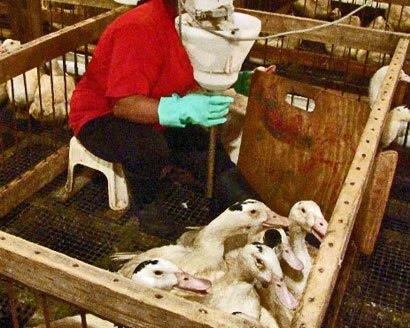VIDEO: A Look At How Foie Gras Is Made
Foie gras is undoubtedly a controversial product; many chefs and culinary experts regard it as an utter delicacy while others deem the product inhumane. Ahead of California's ban on foie gras, The Daily Meal's video producer, Ali Rosen, visited Hudson Valley Farms to see the entire process of making foie gras — from how the chicks are raised to how the ducks are fed and slaughtered.
According to Ariane Daguin, the owner of D'Artagnan, "Foie gras is not made, it's something that man recognized in nature centuries ago and they found out that before migration ducks and geese gorge themselves and store the calories in their liver." The process of making foie gras starts with the birth of the chicks; after about nine weeks of free-range living they are transferred to parks (with about seven ducks living in each park) and that's where the force-feeding happens for two to three weeks. When it comes time for slaughtering, they try to make the environment as stress-free as possible so that no blood gets into the liver.
Dr. Lawrence W. Bartholf, a veterinarian and representative for New York State Medical Veterinary Society explains that "while we would not want a tube put down our throat because our esophagus is very sensitive, for water fowl, they're anatomically totally different; they have a very durable lining to their esophagus that allows them to swallow very spiny fish without incurring any damage." He goes on to explain that the lining is also very flexible and that water fowl don't have a voice box in their throat the way that humans do.
For more about the process of how foie gras is made and the environment that the ducks are living in, check out the video above, or to see chef's reaction to the ban watch our previous video
